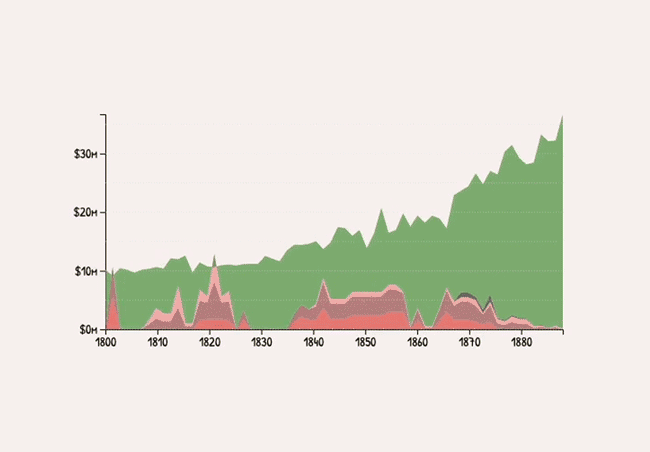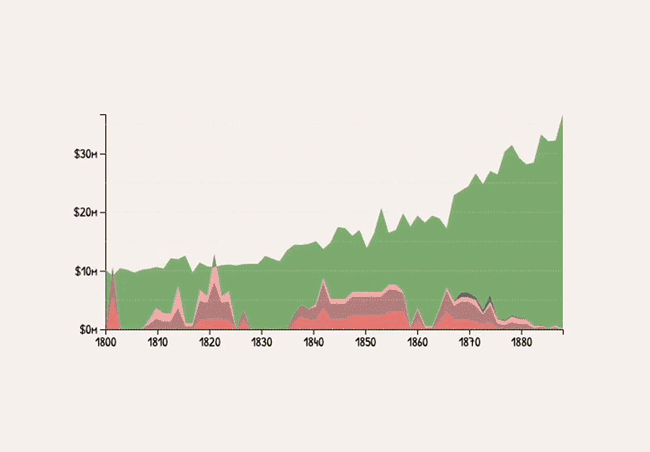Haiti's Independence Debt, Explained


Gourmet Data is a blog where a data journalist breaks down questions. Subscribe either here on Ghost or on Substack.
I am Haitian-American, so it felt appropriate to focus on its history as Ariel Henry, the current prime minister, recently resigned. Haiti's president Jovenel Moise, was murdered in July of 2021, and Henry's resignation adds another page into Haiti's history of turmoil.
Haiti historical significance as the first black republic often gets overshadowed by its politics and economics, so I wanted to do a deep dive as to why and how it got so bad.
A big part of the blame lies at the feet of the Haitian Independence Debt imposed by France in 1825.
Under the threat of military invasion, Haiti agreed to pay France 150m francs (about $21 billion today) to recognize its independence and compensate for the 'loss of slaves and property'. This sum, later reduced to 90 million francs, was an astronomical demand for the new country. When looking at the debt across timelines, you can see how dramatic it looks, at some point taking up half of Haiti's GDP.
A look into Haiti's GDP
Research organizations have special incentives to invest in exploratory data, as other researchers and policy makers alike often have their own questions to answer; best to present the data unaltered, and allow them the power to explore.
Haiti's GDP in the 19th Century
Haiti's GDP, annual Source: Our World in DataThis debt is one example of many, odious debt.
There are other sources of debt for Haiti, including debt got from the Duvalier presidencies. The NYTimes keeps a github dataset here.
Economic and Social Impacts
The repayment of the Independence Debt had catastrophic effects on Haiti's economy and development, and while I understand the precarious situation Jean-Pierre Boyer, under the threat of France in 1825 accepted a very bad deal in teh hopes of preventing war from France.
Haiti used to be the most profitable colony in the world, but its fall from grace was swift and dramatic. The agricultural sector suffered as lands were redirected towards cash crop production to fund the repayments, diminishing local food production and exacerbating poverty.
The need to direct national resources towards debt repayment also hindered investment into other things, such as infrastructure and social services. The impact was not only economic but also social, as the debt repayment exacerbated political instability and limited Haiti's ability to build a cohesive national identity. The financial strain forced the government to impose heavy taxes on its citizens, leading to widespread discontent and a series of political upheavals that further destabilized the country.
The last debt payment made to France technically was in 1888, but Haiti had to pay the US some amounts of money after the latter country bought [xxxx], and the lasting effects of the Independence Debt technically ended in 1947.
Other Examples of Odious Debt
The situation in Haiti is not unique; many nations have grappled with the burdens of debt. However, the scale and circumstances of the Haitian Independence Debt set it apart.
Now, the concept of odious debt necessitates that it is illegitimate. In Kenya, similar things have happened, and while the country is 60 years free from colonial rule, they still owe $70b to this day.
Greece, for instance, entered a debt crisis in 2009 that required multiple bailouts, severely affecting its economy and leading to widespread austerity measures. Argentina has defaulted on its debt multiple times, with the most recent default occurring in 2020.
Unlike these countries, whose debts were largely accrued through modern financial markets, Haiti's debt was imposed as a punitive measure for achieving independence, setting a precedent for economic exploitation and colonial extortion.
Conclusion
There is an existing database of French payments, created by France. As Alexander Sack, the guy who coined the term said, 'we owe you nothing'.
